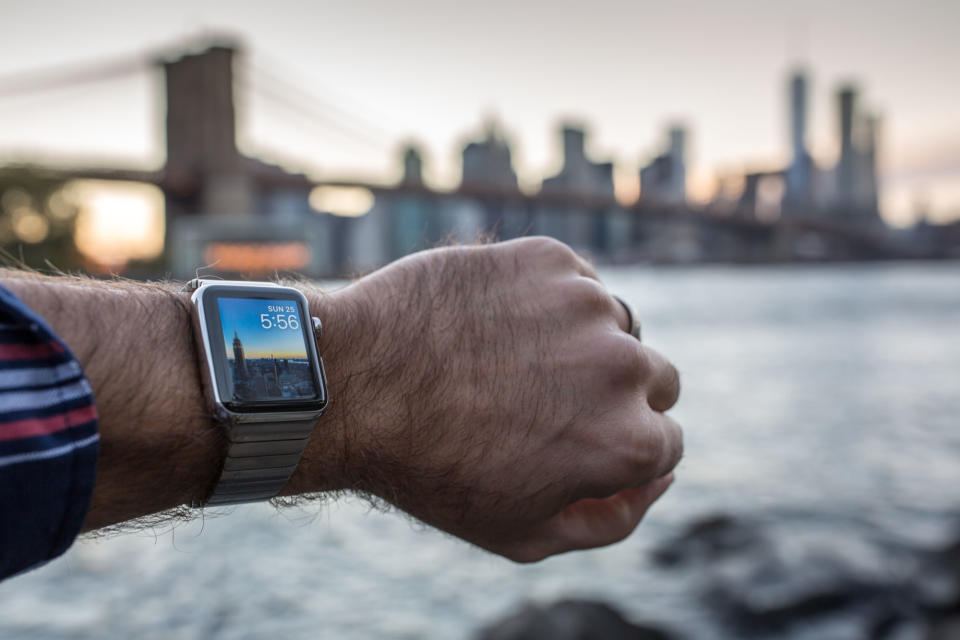This week in tech history: The first Apple Watch hits stores
The Apple Watch wasn't an immediate hit, but it's improved a lot over the past four years.
At Engadget, we spend every day looking at how technology will shape the future. But it's also important to look back at how far we've come. That's what This Week in Tech History does. Join us every weekend for a recap of historical tech news, anniversaries and advances from the recent and not-so-recent past. This week, we're looking back at the launch of the first Apple Watch.
There was a lot riding on the Apple Watch when it first hit stores on April 24th, 2015. It was the first new product category Apple had entered since Tim Cook took over as CEO for the late Steve Jobs. And even though iPhone sales were still riding high, it was becoming clear to the industry at large that the smartphone market couldn't continue to grow at nearly the same rate it had thus far. Apple needed to prepare its next hit -- and in the months leading up to the first Apple Watch reveal in the fall of 2014, it was obvious that tech companies big and small were betting on wearables.
Much like the original iPad, though, the first Apple Watch was a classic "first-gen" product: intriguing, but rough around the edges. That lack of polish showed up mostly in the Watch's sluggish performance. Sure, notifications were handy, the watch faces looked great and its health- and fitness-tracking features showed promise. But third-party apps took far too long to load data, making it easier to just grab your phone.
Perhaps the biggest issue with the first Apple Watch was a ack of focus. Apple just didn't do a good job of explaining who it was for. It had a bunch of really strange "digital touch" communication features that never caught on and were later de-prioritized by Apple, but they were a big deal for the company when the Watch first launched. (Refresh your memory here!) Additionally, third-part apps were hit-or-miss, with tiny, fairly useless versions of Twitter and Instagram showing that Apple and its developers didn't quite know what to do with the Watch.

But that's OK! It was a totally new piece of hardware, and it took time before owners figured out what it was best for. And by the time Apple launched the Watch Series 2 in September 2016, it was clear: This was a device for health and fitness first and foremost. Secondly, it was positioned as a device for quick communication and keeping up with your notifications without having to get your phone. That focus helped Apple build a more compelling story around the Watch, and it started to take off in a way the first one didn't.
Apple also spent a lot of time targeting the first Apple Watch on the luxury market, even more so than it does with its other products. Indeed, there's no mistaking a 18-karat gold, $10,000 Apple Watch as anything but an attempt to get credibility from serious timepiece collectors and aficionados -- the sort of people who usually spend $10,000 on a Rolex, not a gadget.
But that strategy makes little sense with a device that'll be outdated within a few years, and Apple quickly gave up on that extreme high end of the market. The company still makes stainless steel watches and has a partnership with the luxury retailer Hermès, which makes expensive leather straps for the Watch. But for the most part, the less expensive aluminum watches are what you'll see on people's wrists.
These days, you'll see plenty of them on people's wrists. While Android Wear (now Wear OS) never quite caught on, the Apple Watch's popularity has continued to grow. At this point, it's a polished, refined product that's fast and reliable, if not something that's essential as a smartphone for most people. But like most Apple products, it definitely has a devoted following -- something that seemed far from a certainty when the first Apple Watch hit stores four years ago.



